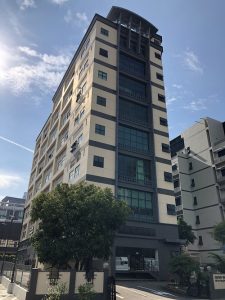M&G Real Estate has bought its second logistics facility in South Korea for KRW155.5bn (S$180m). The 100,000sqm Yongin Baegam Logistics Centre, located close to Seoul, has been acquired on behalf of its core Asian property strategy.
M&G Real Estate (formerly known as PRUPIM) is a global real estate investment manager, providing integrated services for fund management, asset management and property management. M&G Real Estate, part of M&G Investments, is the real estate investment arm of Prudential plc in the UK and Europe. M&G Real Estate is headquartered in the United Kingdom.
M&G Real Estate began its real estate investment activities in 1848, and is today one of the largest real estate investment groups in the United Kingdom. There are over 200 employees; Alex Jeffrey was appointed chief executive in July 2012.
Manager of the strategy, Richard van den Berg, said: “We are positive about the fundamentals in Asia Pacific’s logistics sector, particularly in Korea, where supply is limited and demand is strong.”
He added that South Korea’s logistics facility sector, like the rest of the world, is seeing much interest from both domestic and foreign institutional investors.
Table of Contents
“Similar to markets like Japan and China, it is the lack of modern logistics facilities that is driving strong occupier (tenant) upgrades and relocation demands for more modern, higher specification industrial space,” Van den Berg said.
With increasingly limited land allocated or approve for warehouse construction, the South Korean logistics facility sector may see lower levels of supply, particularly in well-located areas that are close to key highways and logistics clusters.
“The continued investor interest should drive yields lower for well-located, prime logistics space” Van den Berg added.
He referred to research by Euromonitor which estimated that online retail in South Korea is expected to make up more than 35% of all retail spending by 2023 or to increase from US$72bn in 2018 to US$133bn.
Currently, online sale accounts for 27% of all retail sales in South Korean.
Van den Berg said: “M&G has been investing in South Korea since 2006 and our first logistics investment was Homeplus Hub in Ansung, acquired in 2017. Our experience investing in Korea has been positive from both income and capital appreciation perspectives. We will continue to look for high quality, well-located logistics assets in South Korea that fit our investment strategy.”
Colliers International’s recent research said E-commerce sector is among top warehouse space occupier in Singapore. Its latest research Radar report The Future of Logistics Real Estate, which tracks the performance and outlook for the logistics property sector, identifies the top logistics micro-markets in Singapore, and provides recommendations for occupiers, landlords and investors.
The report noted that third-party logistics (3PL) and logistics companies are the top occupier sector, taking up 44% of occupied warehouse space in Singapore, based on industrial properties track by Colliers Research. 3PL and Logistics sector comprises freight forwards, transport agents, supply chain and logistics support companies, delivery service, storage service, and e-commerce.
Ms Tricia Song, Head of Research for Singapore at Colliers International, said, “Singapore is a top class logistics hub with the world’s busiest transshipment port, second busiest port in terms of total cargo tonnage handled, and the 12th busiest airport by cargo traffic as of 2018.
As such, Singapore has been the location of choice for e-commerce sector players to establish their footprint when entering the region. The emergence of e-commerce in recent years has had a positive spillover to the 3PL and logistics sector in Singapore.”
 Apart from the 3PL and logistics sector, the other warehouse occupiers comprise: the manufacturing sector (which accounted for 30% of occupied warehouse space); distributors (10%); food, chemicals and pharmaceuticals (6%); oil, marine and energy (5%); and IT and technology (5%).
Apart from the 3PL and logistics sector, the other warehouse occupiers comprise: the manufacturing sector (which accounted for 30% of occupied warehouse space); distributors (10%); food, chemicals and pharmaceuticals (6%); oil, marine and energy (5%); and IT and technology (5%).
Colliers Research believes regional trade and growth in e-commerce should channel to stronger warehouse demand in the long term and benefit Singapore given its logistics hub status However, the small market size in Singapore as well as greater efficiencies in inventory forecasting and stock management could potentially moderate the need for drastic warehouse expansion.
Top logistics micro-markets in Singapore
In Singapore, there are about 117 million square feet of total logistics facility space in Singapore – of which more than 80% are located in the East and West Regions of Singapore.
After assessing the major logistics micro-markets in Singapore, Colliers Research ranks Changi as the top location for occupiers, followed by Tuas and Boon Lay/Jurong West.
https://www.icompareloan.com/resources/mortgage-broker-singapore-best-rate/
The research team evaluated the logistics facility micro-markets against four criteria: (i) presence of an existing logistics cluster and supporting infrastructure; (ii) availability of quality warehouse stock with consideration of both existing and future supply, as well as vacancy rate; (iii) accessibility to airport or sea ports; and (iv) rent premium compared to island-wide average.
Dominic Peters, Senior Director of Industrial Services at Colliers International, said, “We believe it is timely for tenants to review their lease and space requirements, and explore options. They can consider locating further away from the city centre to enjoy rental savings or opt for customised and build-to-suit warehouse facilities which would offer greater rental certainty. Meanwhile, landlords should continuously enhance and upgrade assets to adopt innovative and eco-smart systems in preparation for the new wave of industrial revolution, Industry 4.0.”
https://www.icompareloan.com/resources/what-is-sibor-and-sor/
Rents on decline for five years; e-commerce sector growth and benign supply pipeline should support rents and occupancies
JTC rental index showed that island-wide warehouse rent has been on a downward trend for more than five years, with Q2 2019 rental index declining by 19.4% from its peak in Q4 2013. This is possibly due to the influx of new supply averaging 6.3 million sq feet (equivalent to 7.6% of total warehouse stock) per year during the 2014-2018 period, bringing total warehouse stock to 117 million sqft as of Q2 2019.
Against a small population of 5.7 million, Singapore has one of the highest warehouse space in Asia at 20 sq feet per capita, but lower than its developed peers – US and Japan. However, Colliers Research does not think there is a sustained oversupply of warehouse stock as Singapore’s logistics hub status should benefit from both domestic and regional growth in e-commerce sector. In addition, it expects warehouse supply to ease, with annual expansion averaging 1.5% of warehouse total stock over 2019-2023.
Ms. Song added, “We forecast logistics rents to remain weak on the deterioration in global trade and the potential economic slowdown in the near-term. However, there are potentially some upside ahead, particularly from the rising e-commerce and logistics sector. In addition, with a more benign warehouse supply pipeline, we expect occupancies and rentals to improve from 2022 onwards.”






